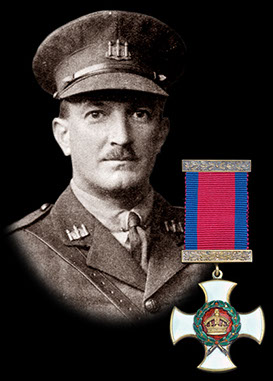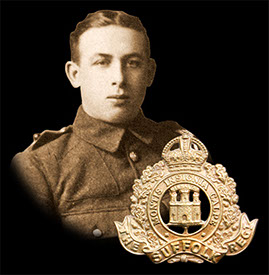
Who Were
The Cambs
The Cambs
at War
1/1st Btn 1914-1919
1914 - 1/1st Overview
1915 - 1/1st Overview
1915 - St Eloi
1915 - Fosse Wood
1916 - 1/1st Overview
1916 - The Schwaben
1916 - St Pierre Divion
1917 - 1/1st Overview
1917 - St Julien
Insignia, Medals & Books
Remembering The Cambs
Biographies
About Us &
This Site
Changing of the Guard
For many people it will probably come as a surprise that many of the men serving in the 1/1st Battalion, Cambridgeshire Regiment in 1918 had no connection to the county of Cambridgeshire. In fact since the Somme Offensive in the summer of 1916 the percentage of men in the Battalion from Cambridgeshire decreased with each draft of replacements that arrived. The most obvious cause for this shift was the introduction of the Military Service Act on March 2nd, 1916. This act brought about conscription across Britain, followed by numerous other changes that stripped away the independence of the Territorial Force. After training men could now be easily transferred around between regiments, regardless of if they were TF or War Service.
The Cambs first experienced another major factor in this shift in the Battalion after arriving on the Somme in 1916. The intense level of losses sustained in infantry battalions during offensive operations often overwhelmed that specific regiment’s supply of replacements, this led to replacement drafts from another regiment’s reserve being diverted. Soon handpicked replacement drafts of Cambridgeshires heading out to the 1/1st Battalion from the 3/1st or 4/1st Battalions in the UK would find themselves being transferred to regiments such as the Gloucestershire Regiment when they reached the base depot in France. Further information on these drafts can be found here.
These replacement draft issues continued in the summer of 1917 during the 3rd Battle of Ypres. Alongside drafts of Cambs replacements being sent elsewhere, at times drafts from other regiments, such as the Royal Fusiliers, were posted to the Cambs and slowly the geographical make up of the Battalion changed. After over two years of conscription and replacement drafts the final big shift in the composition of the 1/1st Battalion happened after the near crippling losses sustained in March and April 1918. In the space of one month the Battalion went from a strength of around 900 men to half that. Many battalions from other regiments fared even worse, with some being reduced to a mere handful of men.
By the end of April 1918, when the German Spring Offensive had finally burnt out, numerous divisions in the BEF were left shattered and in need of rebuilding. The demand for replacements overstretched the available supply and often the only choice was either disbanding or merging infantry battalions. In May the 7th (Service) Battalion, Suffolk Regiment, which had already taken on men from the 8th Battalion when it had disbanded several months earlier, was at half strength. Despite two Service Battalions (the 8th and 9th) being disbanded in February 1918, the Suffolk Regt reserve battalions in the UK were struggling to supply men to their eight overseas battalions. The 1/1st Cambridgeshire were in a similar situation with the battalion strength at 22 officers and 434 other ranks, although their reserve battalions were not quite as stretched. It was decided that in order to rebuild these two units quickly and with experienced men, the best option would be some form of merging.
The battered 39th Division, in which the 1/1st Cambs had served since February 1916, was to be reduced to a cadre and used to train American troops. A decree from the War Office stated that no pre-war Regular Army battalion or pre-war Territorial Force battalion should be disbanded, therefore the 1/1st Cambs would be saved as a fighting unit and the order was given for the 1/1st Cambs and the 7th Suffolks to switch places. As part of this switch 11 officers and 408 other ranks from the 7th Suffolks would join the Cambs, leaving a small core of experienced Suffolks men to be handed over to the 39th Div for the training cadre. This instant supply of men joining the Cambs brought the Battalion’s strength back up to over 900. However this reforged battalion was by no means ready to go back into the front line as an efficient fighting unit. Several busy weeks of hard work and training would be needed to get everyone working together and formed into an effective front line unit. Overseeing this merger was the Commanding Officer, Lt Col Saint, who worked tirelessly to reestablish a true esprit de corps and avoid any possible issues. By late May it became clear that this had been achieved and the Cambridgeshires returned to the front.
After three and a half years of overseas service, the 1/1st Battalion that took part in the 100 Days Offensive of 1918 was a very different body of men from the Battalion that had sailed for the Western Front in February 1915. By the summer of 1918, the eager volunteer “Terriers” that had made up the Battalion in 1914, had nearly all been replaced by a mixture of wartime volunteers or conscripts from across England. Evidence of the change in the Battalion can be clearly seen in county where the Military Medal winners resided in. In 1916 nearly all of the men awarded the MM were from Cambridgeshire. However by 1918, just over half of the MM’s awarded to the Battalion were to men from Cambridgeshire, the rest were awarded to men from all across England including, unsurprisingly, a large number to men from Suffolk. The casualties among the men serving in the Battalion also clearly reflect this shift, as can be seen by taking a sample, such as the men killed during the attack on Nurlu on September 5th, 1918. Of the 26 men killed in action only two were native of Cambridgeshire, and even one of these had previously been serving with the Suffolk Regiment.
The shift in background of officers serving in the 1/1st Battalion is a little less obvious. While the majority of the officers serving in the Regiment before the War were native to the county, the outbreak of War led to many from the University’s Officer Training Corps accepting commissions into the Regiment. There were therefore officers from across the country from very early on, albeit with a connection to Cambridge through the University. The selection and training of potential officers was a comparatively slow process compared to other ranks and soon the supply of suitable candidates from the OTC was running short. Officers were also often temporarily attached from other regiments, such as the Bedfordshire Regiment, and some of these requested to be permanently transferred to the Cambs.
While the nationality of nearly every other rank that served in the Cambridgeshires was English, this was not the case among the officers. In 1915 with the OTC drained of potential officers and the selection of local men taking too long, an overseas source was found. A large number of South Africans serving in the ranks of the SA Army were selected, trained and commissioned into English county regiments, including the Cambridgeshires. Many of the South Africans who were commissioned into the Cambs went on to serve with 1/1st Battalion on the Western Front and several of them were decorated for their gallantry. Further details about these South African officers will be added to this site at a later date.
All of the officers and men who served in the Battalion (apart from attached officers), regardless of their background or place of birth, wore the cap badge of the Cambridgeshire Regiment and all were proud of the Battalion’s fine fighting reputation and achievements. The veteran officers and men still serving in the Battalion went to great lengths to keep the old identity alive, these efforts were supported and aided by the County Territorial Force Association in Cambridge. When the Cadre finally returned to Cambridge in May 1919 there were, amazingly, still a number of the original local pre-war Territorial Force men present, including the Commanding Officer, Lt Col Clayton DSO. Alongside them was a mixture of volunteers and conscripts, some from Cambridge and others from Suffolk or further afield.
Perhaps the most fitting description of how those who served in the Cambridgeshires felt should come from their most famous commanding officer, “Ted” Riddell, who had no connection with Cambridgeshire before he was posted to command the Battalion in June 1916. When writing the regimental history he wrote:
It was with mingled feelings of pride and fear that I accepted the task of chronicling the actions of the regiment during the time I was privileged to serve with it: pride in the knowledge that I had been selected for this work, and fear – amounting to despair – that I should fail to do justice to the glorious men who had been my companions and ever ready helpmates, come victory or defeat. Is it to be wondered that fear beset me when I knew that no words penned by man could express adequately the admiration I shall always feel for the martial ardour, efficiency, and - perhaps to me, best of all – the friendship of a great battalion.

Thomas Burrow MM, from Barrow in Furness, previously served with the 23rd RF.

Walter Bonnett DCM, from Bury St Edmunds, transferred from the Suffolk Regt.

Capt Kenneth Gill MC, Cambridge University student and member of the OTC.

Lt Arthur Looker DSO, one of the South African officers in the Cambs.

Percy Doggett, had previously served in the 11th and 7th Battalion, Suffolk Regt.

This site went live on the 14th February 2015 to mark 100 years since the 1/1st Cambs went off to war.
WE WILL REMEMBER THEM
Email us: cambsregt@gmail.com
Copyright 2015, 2016, 2017, 2018, 2019 by Felix Jackson. The information and images on this site should not be reproduced without prior permission.